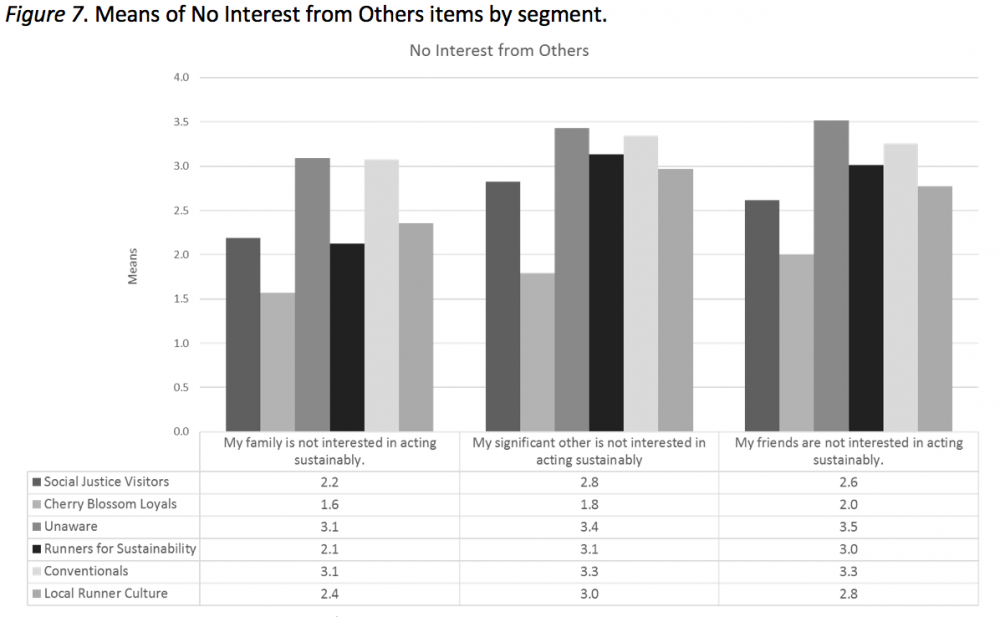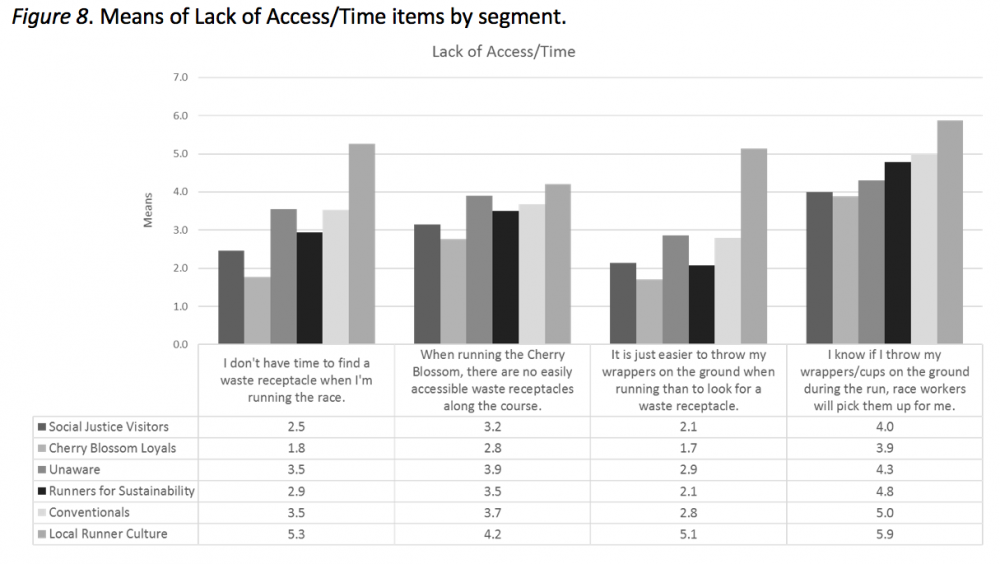Image

Image

Image

Image

Image

Image

Image

Image

Image

Importance of Topic: Sport event managers have launched engagement campaigns to promote sustainable behavior changes among participants with mixed success (Trail & McCullough 2018). There are still managerial and marketing objectives that need to be resolved to leverage these campaigns to maximize the event's sustainable legacy (O'Brien & Chalip 2007) and encourage sustainable behavior change among participants. To this end, the purpose of this study is to examine the barriers that prevent sustainable behaviors and how to overcome these barriers at a 10-mile race (the Run). While previous researchers have examined the value-action gap, between environmental values and sustainable behaviors (e.g., Juvan & Dolnicar 2014), it is necessary to examine whether this gap can be bridged and whether perceptions of barriers differ among specific participant segments to advance the sustainable legacy of the event.
Explain Method & Data Source: A survey link was emailed to 17,000 people in the Run's database. In total, 746 people responded to the survey and complete data were collected from 531 participants.
Data (Instrument): We used two internal constraint dimensions, Lack of Knowledge, which measured a lack of understanding or knowledge about waste diversion, and Lack of Worth, which measured a perception that waste diversion wasn't worthwhile. We also included two external constraint dimensions, No Interest from Others, which measured a lack of support from friends and family in acting sustainably, and Lack of Access/Time, which included items about lack of easily accessible waste receptacles and lack of time to look for them. We also included an item measuring the intention to dispose of waste correctly during the Run (sustainability intention).
Results: A cluster analysis using psychographic variables (needs, values, motives) showed that six distinct and viable segments existed in the sample (Figure 1). We named the six segments Social Justice Visitors (SJVs), Loyals, Unawares, Runners for Sustainability (RfS), Conventionals, and Local Runner Culture (LRC). An ANOVA showed that the segments differed on sustainability intentions [F(5, 517) = 25.193, p < .001, 2 = .197] (Figure 2). In addition, four separate MANOVA analyses showed segment differences on all four sets of constraints, two internal (Lack of Knowledge [F(15, 1408) = 31.127, p < .001, 2 = .232] and Lack of Worth [F(15, 1408) = 17.863, p < .001, 2 = .148]) and two external (No Interest from Others [F(15, 1408) = 16.597, p < .001, 2 = .139] and Lack of Access/Time [F(20, 1689) = 24.234, p < .001, 2 = .189]) (Figures 3-6). Furthermore, stepwise hierarchical regression analyses on each segment showed differential impacts of internal and external constraints on sustainability intentions. For Social Justice Visitors, internal and external constraints explained a total of 30.1% of the variance in intentions to dispose of waste correctly. Similarly, internal and external constraints explained a total of 12.9% (Loyals), 30.3% (Unawares), 16.6% (RfS), 31.3% (Conventionals), and 11.4% (LRC), of the variance in intentions to dispose of waste correctly for each segment respectfully (Figure 7).
Experience level
Intermediate
Intended Audience
Faculty
Session Time Slot(s)
Time
-
